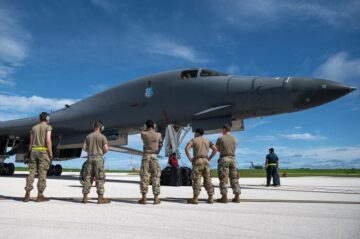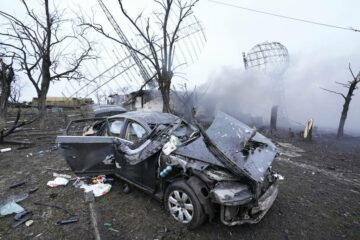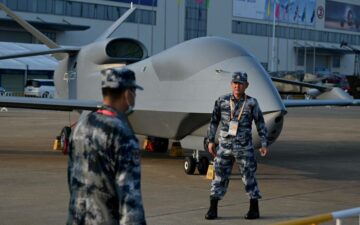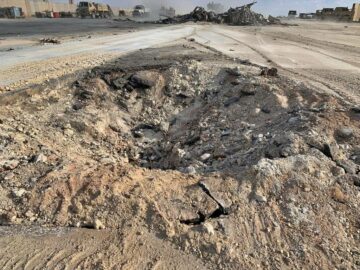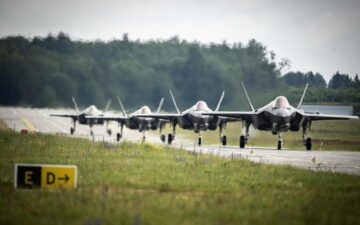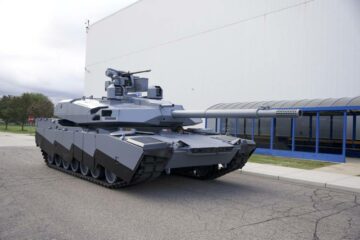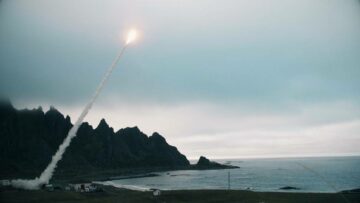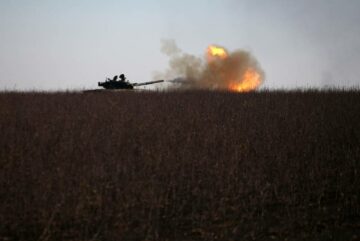
Earlier this month, a major dam along Ukraine’s Dnipro River in Kherson province – the de-facto dividing line between Ukrainian and Russian forces on the war’s southern front – was destroyed, creating a humanitarian catastrophe. A deluge of water turned towns and streets into a detritus-filled swamp.
But this was not the first time that water has been weaponized in this war. With hydropower an important resource in a region starving for energy, and with self-styled volunteer forces taking command in local “oblasts,” water has become one of the war’s most important assets. That makes dams critical infrastructure on par with nuclear power plants.
It is hard to imagine a type of warfare more unconventional or prehistoric than “hydraulic warfare”— that is, the deliberate flooding during combat. True, this kind of warfare is not new, but an age-old technique used to enhance defenses. During the Eighty Years’ War, Dutch rebel led by William of Orange intentionally flooded low-lying areas to defend against the Spanish invaders. The Chinese breaching of Yellow River levees in 1938 to slow down the Japanese advance was called “The Largest Act of Environmental Warfare in History.”
During World War II, Josef Stalin directed his secret police to blow up a hydroelectric dam in the Ukrainian city of Zaporizhzhia to slow the German advance. The corresponding flooding was estimated to have killed upwards of 20,000 people caught in its path. Thus, flooding rivers can create a very effective defense but it can also be costly to residents in the flood plain.
Consider what occurred during the early days of the war. To halt the initial Russian advance onto Kyiv, a handful of enterprising civilians, with support from the Ukrainian military, blew up a dam where the Irpin River met the Dnipro. Their aim: to turn a minor river basin into a major obstacle.
The waterway was not particularly large – about 10-30 feet across in many areas – but it was is deep and wide enough make fording nearly impossible, yet still easy enough to cross using pontoon or other military bridges. More importantly, given its proximity to the center of Kyiv, the river was the final natural obstacle between the advancing Russian army and the capital.
After carefully breaching the dam and sending more than 31 billion gallons of water gushing into the Irpin River, the surrounding farmland from the reservoir was flooded.
About a month later, the Russians gave up their assault on Kyiv and withdrew all their forces from Kyiv and its surrounding areas. They never got a sizable force across the Irpin River. No, blowing the dam alone did not save the city, in and of itself, but it did slow the advance and bought the Ukrainians time to defend themselves.
Of course, blowing up the Kakhovka dam and hydroelectric plant in southern Ukraine has led to flooding orders of magnitudes higher than the flooding of the Irpin: tens of thousands of homes lost, farm fields lost, populations without drinking water, minefields uprooted and floating to unknown locations, and the second largest nuclear power plant in Europe put at even more risk. Ukrainian officials have called it “ecocide” — the mass destruction of ecosystems.
Yet such targeting of waterways and hydro-plants has become not an outlier of modern warfare, but a common feature. More than a year later, the Irpin remains flooded, homes and farmlands destroyed or unusable, and the dam has yet to be fixed. But nearly all Ukrainians, to include those caught in the flood path, would agree that it was necessary and worth the cost.
While we tend to fixate on the more AI-powered weaponry ordinary Ukrainians are tinkering on in their basements – the 3D-printed drones and such – we must not forget that war is a battle against the elements and one’s natural surroundings; in this case, the rivers and other waterways that crisscross Ukraine.
Yes, sophisticated tanks and fighter jets are important to shift the lopsided balance of power in this war. But water is equally critical. Nuclear facilities rely on water to cool them. Civilians rely on potable water to survive, while flooded farms and fields cripple food stocks.
Hydraulic warfare is literally washing away people’s livelihoods and is every bit as destructive, if not more, than traditional munitions.
Kyiv’s military, and NATO, must plan accordingly.
Lionel Beehner is a senior director at Columbia’s School of International and Public Affairs. Liam Collins is a Fellow at New America and was the founding director of the Modern War Institute at West Point. John Spencer is chair of urban warfare studies at the Modern War Institute, co-director of MWI’s Urban Warfare Project, and host of the Urban Warfare Project Podcast.
- SEO Powered Content & PR Distribution. Get Amplified Today.
- EVM Finance. Unified Interface for Decentralized Finance. Access Here.
- Quantum Media Group. IR/PR Amplified. Access Here.
- PlatoAiStream. Web3 Data Intelligence. Knowledge Amplified. Access Here.
- Source: https://www.defensenews.com/opinion/2023/06/14/hydraulic-warfare-is-here-to-stay-nato-should-plan-for-it/
- :has
- :is
- :not
- :where
- $UP
- 20
- 70
- a
- About
- accordingly
- across
- Act
- advance
- advancing
- Affairs
- against
- age-old
- AI-powered
- aim
- All
- alone
- along
- also
- america
- an
- and
- ARE
- areas
- Army
- AS
- Assets
- At
- away
- Balance
- Battle
- BE
- become
- been
- between
- Billion
- Bit
- Blowing
- bought
- bridges
- but
- by
- called
- CAN
- capital
- carefully
- case
- caught
- Center
- Chair
- chinese
- City
- civilians
- Collins
- combat
- Common
- Cool
- Corresponding
- Cost
- costly
- course
- create
- Creating
- critical
- Critical Infrastructure
- Cross
- Days
- deep
- Defense
- destroyed
- DID
- directed
- Director
- down
- Drones
- during
- Dutch
- Early
- easy
- Effective
- elements
- energy
- enhance
- enough
- enterprising
- environmental
- equally
- estimated
- Europe
- Even
- Every
- facilities
- farm
- farmland
- Farms
- Feature
- Feet
- fellow
- Fields
- final
- First
- first time
- fixed
- floating
- flood
- flooded
- food
- For
- Force
- Forces
- founding
- from
- front
- gave
- German
- given
- handful
- Hard
- Have
- here
- higher
- his
- Homes
- host
- HTML
- HTTPS
- Humanitarian
- Hydropower
- if
- ii
- images
- imagine
- important
- impossible
- in
- include
- Infrastructure
- initial
- Institute
- International
- into
- IT
- ITS
- itself
- Japanese
- Jets
- John
- jpg
- Kind
- large
- largest
- later
- Led
- Line
- local
- locations
- lost
- major
- make
- MAKES
- many
- Mass
- met
- Military
- minor
- Modern
- Modern Warfare
- Month
- more
- most
- must
- Natural
- nearly
- necessary
- never
- New
- no
- nuclear
- Nuclear power
- obstacle
- occurred
- of
- officials
- on
- ONE
- or
- Orange
- orders
- ordinary
- Other
- particularly
- path
- People
- people’s
- Plain
- plan
- plants
- plato
- Plato Data Intelligence
- PlatoData
- podcast
- Point
- Police
- populations
- power
- power plants
- project
- public
- put
- region
- rely
- residents
- resource
- Risk
- River
- russian
- Russians
- Save
- School
- Second
- Secret
- sending
- senior
- shift
- should
- sizable
- slow
- sophisticated
- Southern
- Spanish
- stay
- Still
- Stocks
- studies
- such
- support
- Surrounding
- survive
- taking
- Tanks
- targeting
- tens
- than
- that
- The
- The Capital
- their
- Them
- themselves
- they
- this
- those
- thousands
- time
- to
- towns
- traditional
- true
- TURN
- Turned
- type
- Ukraine
- Ukraines
- Ukrainian
- Ukrainians
- unconventional
- unknown
- upwards
- urban
- used
- using
- very
- volunteer
- war
- was
- washing
- Water
- we
- West
- What
- while
- wide
- with
- without
- world
- worth
- would
- Yahoo
- year
- yellow
- yet
- zephyrnet



